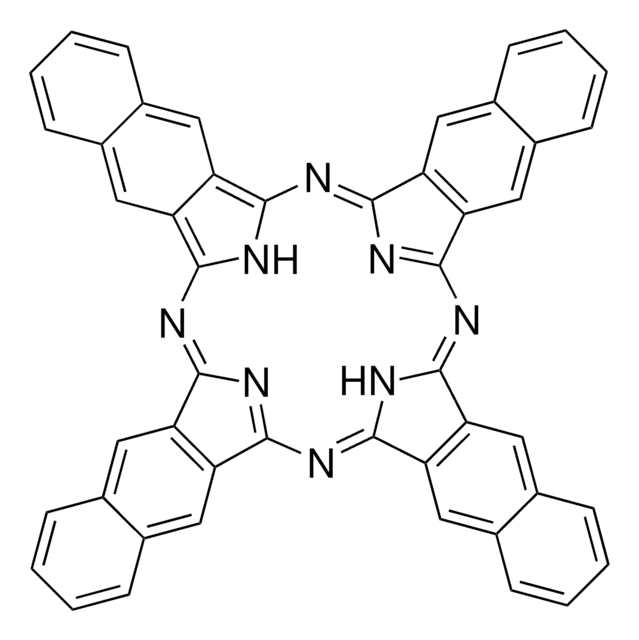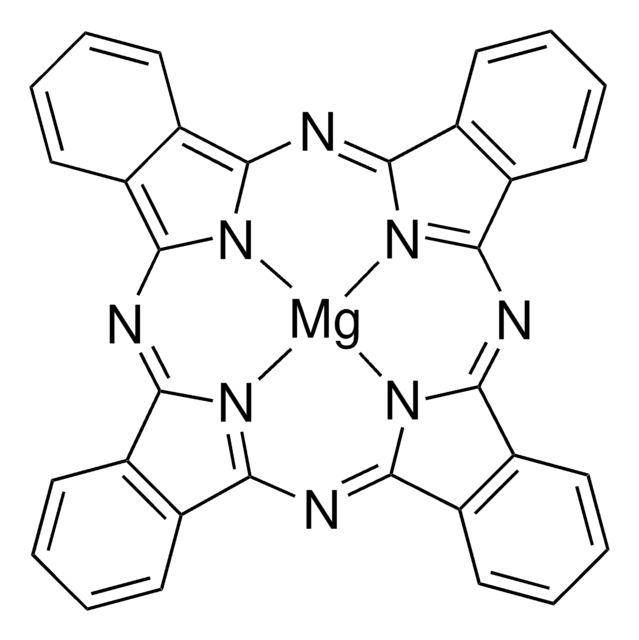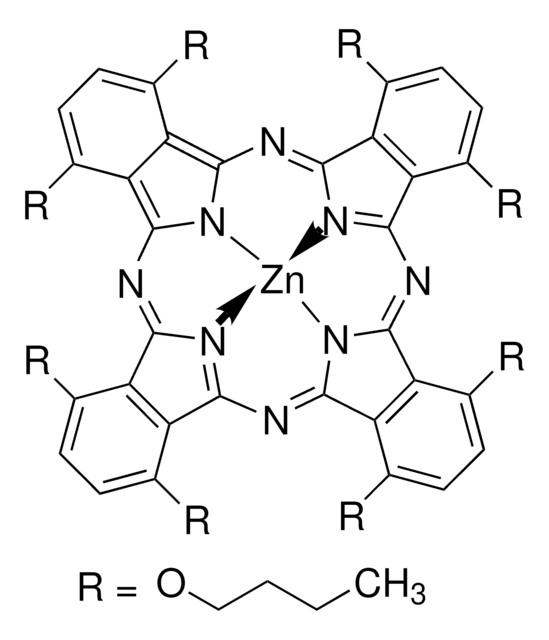341169
Zinc phthalocyanine
Dye content 97 %
Synonym(s):
Phthalocyanine zinc salt
About This Item
Recommended Products
composition
Dye content, 97%
reaction suitability
reagent type: catalyst
core: zinc
λmax
701 nm
Orbital energy
HOMO 5.17 eV (CV)
LUMO 3.78 eV (CV)
OPV Device Performance
ITO/ZnPc:P60 (1:1)/Bphen/Ag
SMILES string
[Zn]1n2c3nc4nc(nc5n1c(nc6nc(nc2c7ccccc37)c8ccccc68)c9ccccc59)c%10ccccc4%10
InChI
1S/C32H16N8.Zn/c1-2-10-18-17(9-1)25-33-26(18)38-28-21-13-5-6-14-22(21)30(35-28)40-32-24-16-8-7-15-23(24)31(36-32)39-29-20-12-4-3-11-19(20)27(34-29)37-25;/h1-16H;/q-2;+2
InChI key
PODBBOVVOGJETB-UHFFFAOYSA-N
Looking for similar products? Visit Product Comparison Guide
General description
Application
Storage Class Code
11 - Combustible Solids
WGK
WGK 3
Flash Point(F)
Not applicable
Flash Point(C)
Not applicable
Personal Protective Equipment
Choose from one of the most recent versions:
Certificates of Analysis (COA)
Don't see the Right Version?
If you require a particular version, you can look up a specific certificate by the Lot or Batch number.
Already Own This Product?
Find documentation for the products that you have recently purchased in the Document Library.
Customers Also Viewed
Articles
Single-walled carbon nanohorns(SWCNHs) - Find manufacturing, material properties, and applications of carbon nanohorns.
While dye sensitization as the basis for color photography has been accepted for a very long time,1 attempts to use this principle for the conversion of solar light to electricity generally had resulted only in very low photocurrents, below 100 nA/cm
Our team of scientists has experience in all areas of research including Life Science, Material Science, Chemical Synthesis, Chromatography, Analytical and many others.
Contact Technical Service









